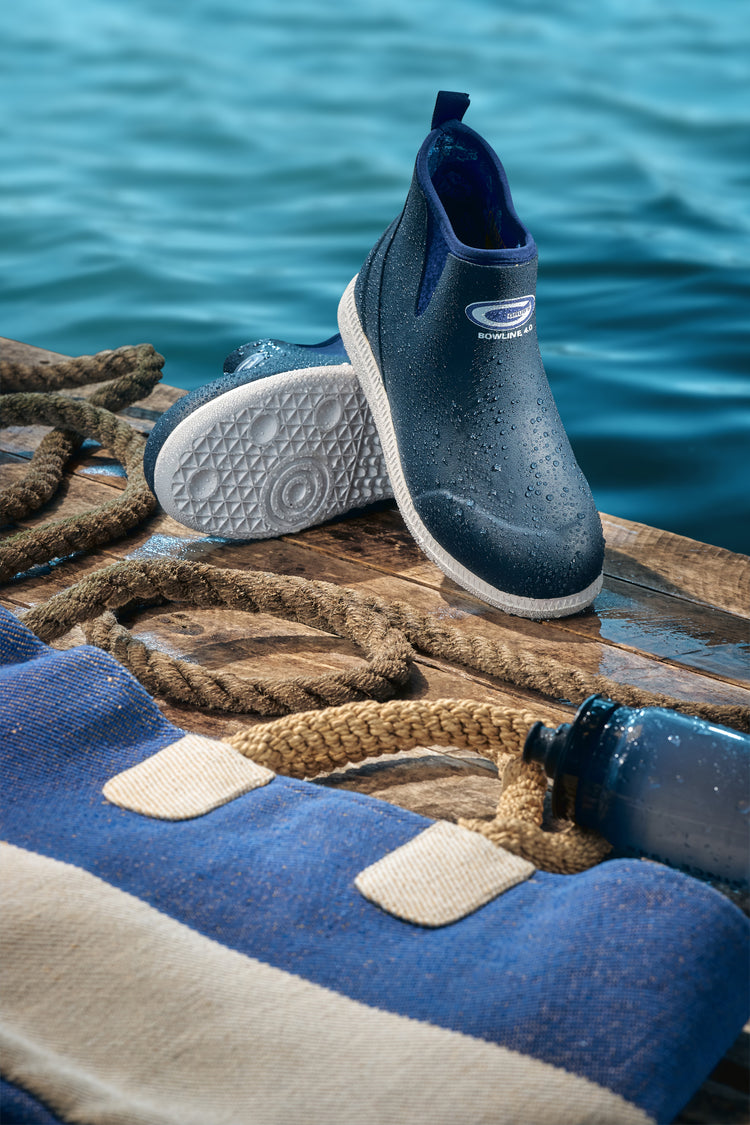Waterproof boots are important for several reasons, particularly for people who frequently engage in outdoor activities or work in wet conditions. Here are some key benefits:
- Keeps Feet Dry: Waterproof boots are designed to keep moisture out, preventing water from soaking through to your feet (shop waterproof boots for men here). This is essential in rainy or wet environments, as wet feet can lead to discomfort, blisters, and potential infections.
- Prevents Cold Feet: In cold, wet conditions, wet feet can cause body heat to dissipate rapidly, leading to cold feet and potentially even hypothermia in extreme cases. Waterproof boots help retain warmth by keeping moisture out.
- Durability: These boots are often made from high-quality, durable materials like treated leather, rubber, or synthetic materials that can withstand harsh environments. This makes them ideal for long-term use in tough outdoor settings.
- Protection in Varied Terrains: These boots offer protection in muddy, snowy, or waterlogged terrains. They prevent mud, snow, or other debris from getting into your footwear, improving comfort and stability.
- Improved Hygiene: Keeping feet dry helps reduce the risk of fungal infections like athlete’s foot, which thrive in moist environments.
- Versatility: These boots are versatile for different activities such as hiking, construction work, gardening, or even casual wear in wet climates, providing both protection and comfort.
How Are Boots Made Waterproof?
These boots are designed using specific materials and construction techniques to prevent water from entering, while still allowing moisture (like sweat) to escape, keeping your feet dry and comfortable. Here are some key elements:
1. Materials:
- Membranes: Many waterproof boots use a membrane sandwiched between the outer and inner layers of the boot. Such as the Grubs proprietary technology is popular, breathable membrane that allows moisture from sweat to escape but prevents water droplets from entering. Other brands also offer similar waterproof technologies.
- Rubber or Synthetic Outsoles: The soles of our boots are typically made of solid rubber or synthetic materials, which are naturally impermeable to water. This prevents water from entering through the bottom of the boot.
- Treated Leather or Synthetic Uppers: Leather boots use treated leather or synthetic materials that are designed to repel water. For example, full-grain leather that has been treated with a water-repellent finish or polyurethane-coated synthetic fabrics keep moisture from soaking through the outer layer.
2. Seam Sealing:
- Sealed Seams: A major point of water entry in any footwear is through the seams, where different pieces of the boot are stitched together. In some boots, the seams are often sealed or taped with waterproofing material to block water. Seam sealing ensures that moisture cannot seep through tiny gaps where the fabric or material is stitched.
- Glued Construction: Some boots use gluing instead of stitching for the seams, or they add a waterproof adhesive layer to reinforce stitched seams. This helps further prevent water from entering.
3. Gusseted Tongue:
- Sealed Tongue: A gusseted tongue is attached to the sides of the boot (instead of being open on both sides like in regular shoes), which prevents water, dirt, or snow from slipping into the boot through the gap where the tongue meets the upper. This feature is especially useful when walking through deep water or snow.
4. Coatings and Treatments:
- DWR (Durable Water Repellent): Many waterproof boots have an outer layer treated with a DWR coating. This chemical treatment causes water to bead up and roll off the surface of the boot rather than soaking in. DWR coatings wear off over time, so some boots may require periodic reapplication to maintain their water resistance .
- Wax or Oil Treatments: Leather boots can be treated with wax or oil to create a barrier against water. Regularly applying these treatments ensures that leather maintains its water resistance.
5. One-Piece Construction:
- In some boots, particularly rubber boots, the entire boot is made from a single piece of material (like molded rubber or neoprene) without any seams. This design eliminates any potential points where water could enter, making them completely water tight . These boots are commonly used in farming, fishing, or other wet environments.
6. Boot Height:
- The height of the boot also plays a role in keeping water out. Taller boots provide more protection when walking through puddles, snow, or mud. Even with waterproof materials, low-cut boots might allow water to enter from the top if submerged or splashed.
7. Liners:
- Some boots feature internal waterproof liners. These liners act as an additional barrier, keeping moisture from penetrating through the boot material while ensuring breathability. They are usually positioned between the outer layer of the boot and the insulation or lining.
8. Cuff Closures:
- Many waterproof boots have features like adjustable cuffs or collars at the top, which can be cinched tight to seal out water. These closures are especially useful in snowy or rainy conditions where water might otherwise enter through the top.
Did you know that Grubs Boots is a family owned company? It's True! The family that owns Grubs has been making fine performance footwear since 1776! Read more here


